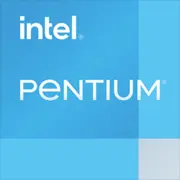Intel Pentium B950

Intel Pentium B950: A Budget Processor for Basic Tasks in 2025
Overview of the capabilities and relevance of a ten-year-old laptop chip
Architecture and Process Technology: Sandy Bridge in the Era of 3 nm
The Intel Pentium B950 processor, released in 2011, is based on the Sandy Bridge microarchitecture and a 32-nm process technology. It is a dual-core chip without Hyper-Threading support (2 threads) with a base clock speed of 2.1 GHz. Turbo mode is absent, limiting performance in resource-intensive tasks. The integrated graphics is Intel HD Graphics (most likely HD 3000) with a base frequency of 650 MHz and support for DirectX 10.1. By 2025, this is archaic: modern iGPUs (such as Intel UHD Graphics in the 12th generation) operate 5–10 times faster.
Architecture Features:
- Improved branch predictor and instruction decoder compared to previous generations.
- AVX support — useful for some media tasks, but inadequate in 2025.
- 3 MB of L3 cache — modest even for basic tasks.
Power Consumption and TDP: Thermal Package of the 2010s
The TDP of the Pentium B950 is 35 watts. In comparison, modern budget processors (like the Intel Celeron N4500) have a TDP of 6–10 watts. High thermal output means that laptops with this chip require active cooling, leading to noise and increased weight (1.8–2.2 kg). In 2025, such devices can hardly be called portable — their competitors in the $300–400 segment (like the Lenovo IdeaPad 1 with AMD Athlon Silver 7120U) are thinner and quieter.
Performance: What Can the Pentium B950 Do in 2025?
Geekbench 6 results (328/539) show that the chip falls behind even budget smartphones. However, its capabilities are sufficient for basic tasks:
- Office Work: Google Docs, Excel with spreadsheets up to 1000 rows, Zoom with the background disabled.
- Multimedia: Viewing 1080p video (but not 4K), photo editing in Lightroom (with delays).
- Gaming: Only older games (like Half-Life 2) at low settings and 720p resolution. CS:GO achieves 20–25 FPS.
Turbo Mode: Absent. Under load, the processor maintains a steady 2.1 GHz but overheats in compact enclosures.
Usage Scenarios: Who Is This Processor Suitable For?
The Pentium B950 is a choice for:
1. Students needing a laptop for note-taking and web surfing.
2. Older Adults using the device for email and online television.
3. Budget Offices where heavy applications are not required.
Not suitable for:
- Video editing, 3D modeling.
- Modern games and AI applications.
- Multitasking (more than 5 browser tabs + background music).
Battery Life: How Long Will It Last?
Laptops with the Pentium B950 were equipped with 30–40 Wh batteries, which, given the TDP of 35 watts, provided 3–4 hours of operation. In 2025, even budget devices (like the Acer Aspire 3 with AMD Ryzen 3 7320U) deliver 8–10 hours.
Power-Saving Technologies:
- Intel SpeedStep — dynamic frequency scaling.
- C1/C3 States — reduced power consumption during idle times.
Unfortunately, these technologies are outdated — modern chips use AI optimization (like the Qualcomm Snapdragon X Elite).
Comparison with Competitors: How Did AMD and Apple Respond?
- AMD A6-3420M (2011): 4 cores, 35 W TDP, performance on par with Pentium B950 but worse in single-threaded tasks.
- Intel Core i3-2350M (2011): Hyper-Threading, 2.3 GHz — 15–20% faster in multi-threaded scenarios.
- Apple M1 (2020): Even five years later, the M1 outperforms the Pentium B950 by 8–10 times.
In 2025: Budget laptops priced at $350–400 (like the HP 15 with Intel N100) offer 3–4 times higher performance at half the power consumption.
Pros and Cons of the Pentium B950
Strengths:
- Cost: Laptops with this chip sell from $200 (new but with outdated OS).
- Repairability: Replacing thermal paste and SSD extends the device's life.
Weaknesses:
- No support for Windows 11 (only Linux or Windows 10).
- Weak GPU: Inability to connect to a 4K external monitor.
- Noisy cooling system.
Recommendations for Choosing a Laptop
If you're considering a device with the Pentium B950 in 2025, pay attention to:
1. Type of Storage: Only SSD (even 128 GB) — HDD will make the system unresponsive.
2. Amount of RAM: At least 8 GB (4 GB is insufficient for browsers).
3. Screen: Matte finish — for use in bright lighting.
Alternatives:
- For $300–400: Lenovo IdeaPad 1 with AMD Athlon Silver 7120U (2023) — supports Wi-Fi 6, 10 hours of battery life.
- For $250–300: Used MacBook Air M1 — 5 times more powerful but without warranty.
Final Conclusion: Is It Worth Buying?
The Intel Pentium B950 in 2025 is a choice for those who need a "digital typewriter" for minimal money. It serves as a workhorse for:
- Text typing.
- Watching YouTube.
- Working with office applications.
Key Advantages:
- Ultra-low price.
- Simple upgrades (SSD replacement, RAM additions).
However, if your budget exceeds $300, it's better to choose a modern laptop — it will last longer and won't disappoint you in performance.
Basic
CPU Specifications
Memory Specifications
GPU Specifications
Miscellaneous
Benchmarks
Compared to Other CPU
Share in social media
Or Link To Us
<a href="https://cputronic.com/cpu/intel-pentium-b950" target="_blank">Intel Pentium B950</a>